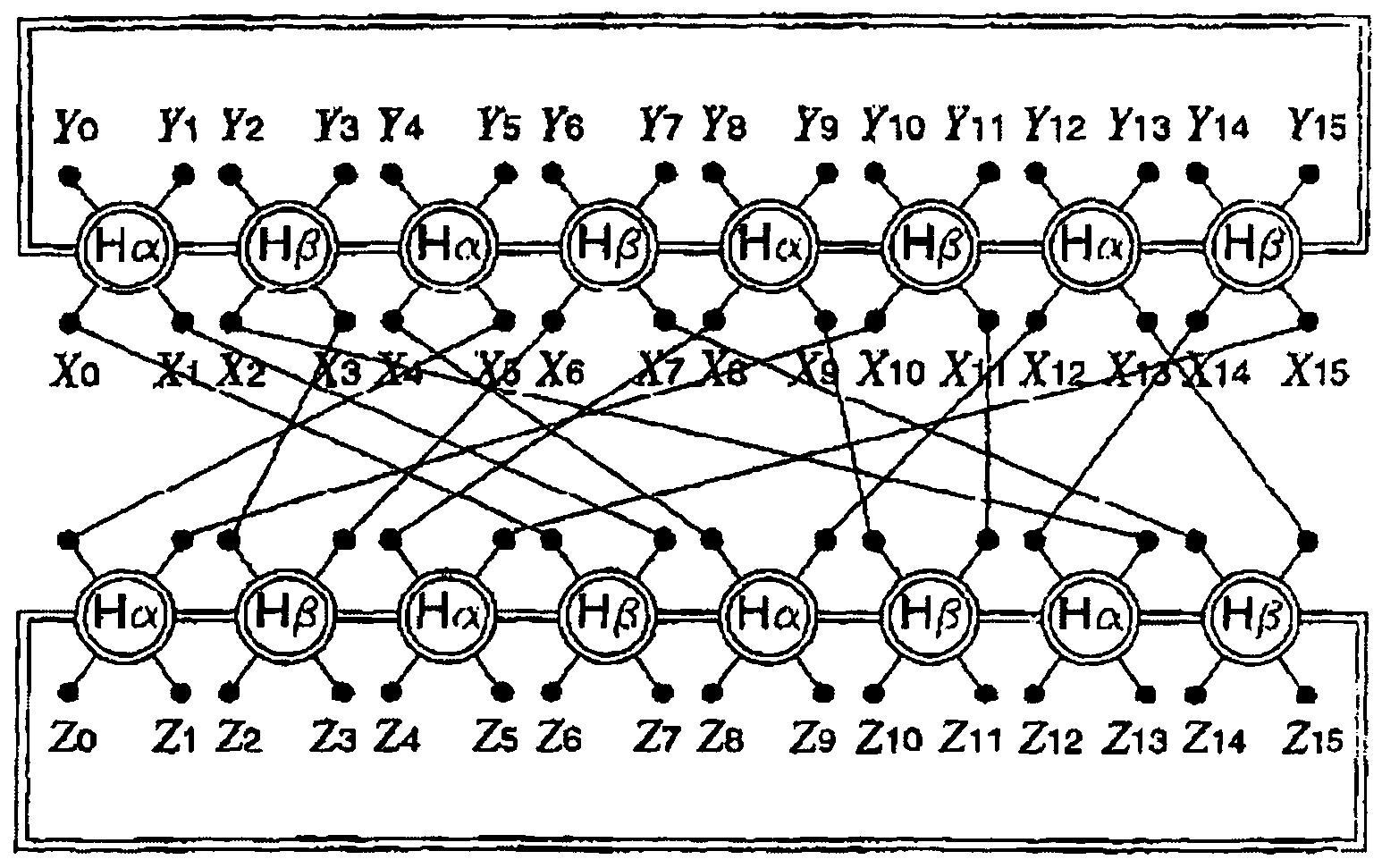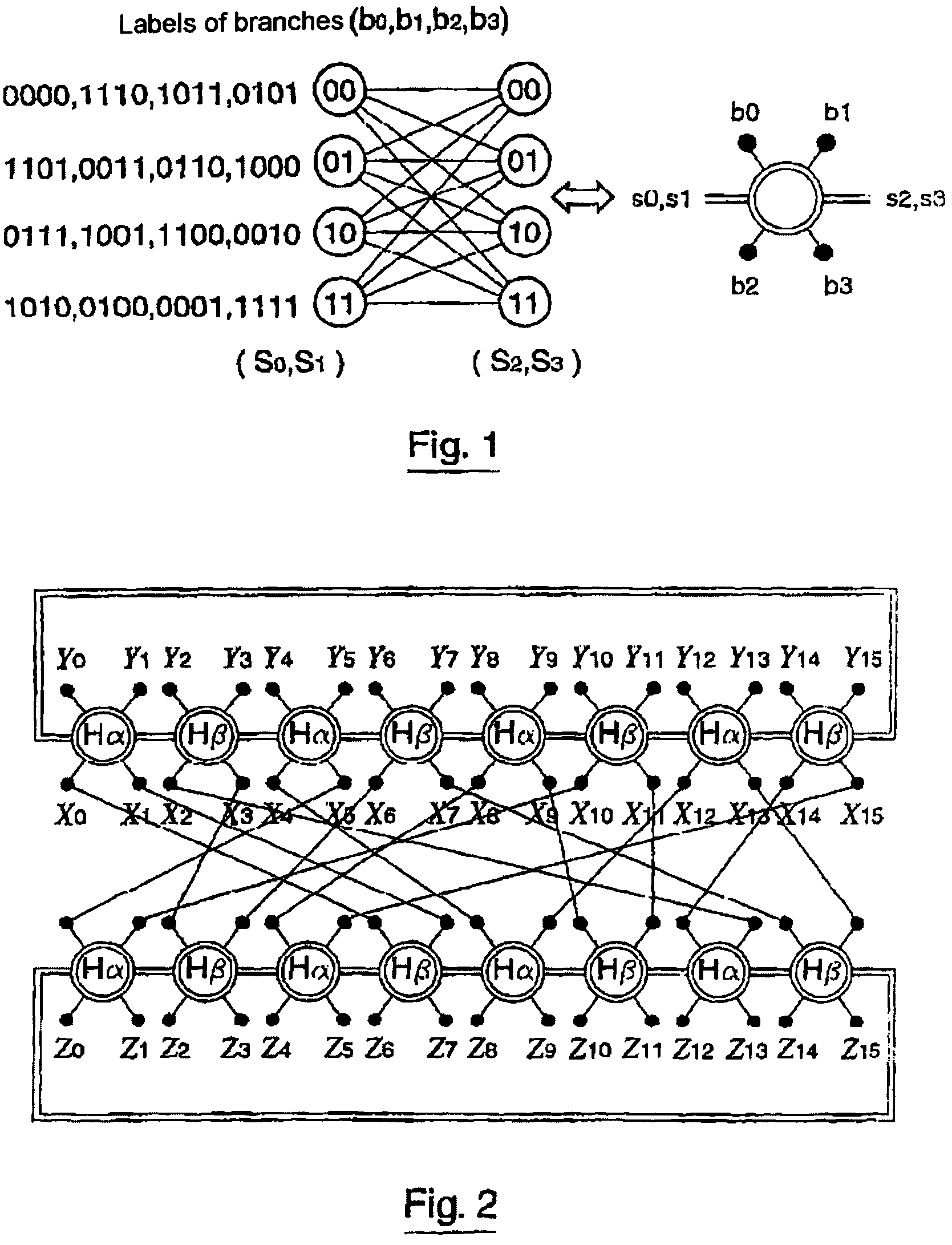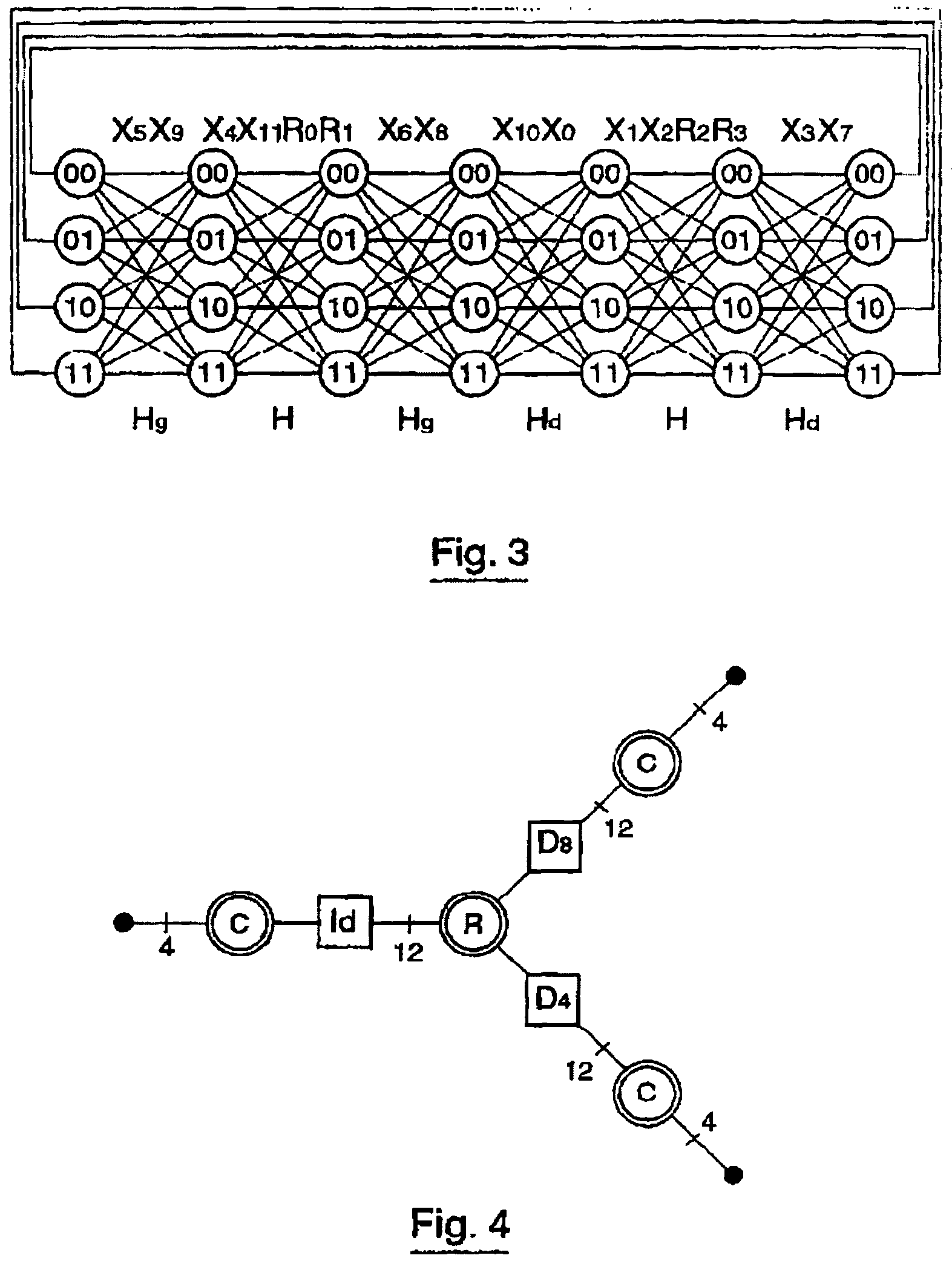Error correction coding method using at least twice a same elementary code, coding method, corresponding coding and decoding devices
a technology of error correction and elementary codes, applied in the field of digital communication, can solve the problems of large computing complexity, relatively expensive, and ineffective correction of errors for blocks with small sizes, and achieve the effect of optimizing correction capacities
- Summary
- Abstract
- Description
- Claims
- Application Information
AI Technical Summary
Benefits of technology
Problems solved by technology
Method used
Image
Examples
Embodiment Construction
1) General Principles of the Invention:
[0066]As already mentioned, the object of the invention is to provide codes, notably “turbo-codes”, with less decoding complexity as compared with known techniques, while guaranteeing good error correction capabilities, even for small block sizes.
[0067]As it will be seen later on, a reduction of the complexity by a ratio at least equal to 2, may be obtained with the invention, notably by using trellises with a small number of states (in this case, a minimum of 4 states for the binary codes) as compared with known techniques, for a same correction capability.
[0068]Moreover, codes with small lengths built with these trellises have excellent minimum distances, hence a capability for correcting more errors than the present “turbo-codes”, in spite of the small size of the block and the trellises.
[0069]In the case of binary codes, an important technical element of the invention is the use of 4 state trellis stages derived from a basic section. In the...
PUM
 Login to View More
Login to View More Abstract
Description
Claims
Application Information
 Login to View More
Login to View More - R&D
- Intellectual Property
- Life Sciences
- Materials
- Tech Scout
- Unparalleled Data Quality
- Higher Quality Content
- 60% Fewer Hallucinations
Browse by: Latest US Patents, China's latest patents, Technical Efficacy Thesaurus, Application Domain, Technology Topic, Popular Technical Reports.
© 2025 PatSnap. All rights reserved.Legal|Privacy policy|Modern Slavery Act Transparency Statement|Sitemap|About US| Contact US: help@patsnap.com



